What we heard
Trent-Severn Waterway National Historic Site

Table of contents
- Introduction and background
- About Parks Canada
- About Trent-Severn Waterway and Peterborough Lift Lock National Historic Sites and their management plan
- Engagement and consultation process
- Who we heard from
- What we heard
- Water management
- Natural environment conservation
- Visitor experience
- Public and stakeholder engagement
- Regulations, legislation and their enforcement
- Peterborough Lift Lock
- Next steps
Title: Trent-Severn Waterway and Peterborough Lift Lock National Historic Sites of Canada — What we heard — Management plan review, public consultation report, September 2022
Organization: Parks Canada Agency
Introduction and background
About Parks Canada
Parks Canada manages Canada’s system of national historic sites, national parks, national marine conservation areas, and Canada’s first national urban park. The mandate of the Parks Canada Agency is:
To protect and present nationally significant examples of Canada’s natural and cultural heritage, and foster public understanding, appreciation and enjoyment in ways that ensure ecological and commemorative integrity of these places for present and future generations.
This mandate includes protecting natural and cultural resources, facilitating inspiring experiences for visitors, and providing public outreach education. Parks Canada plans and manages for the three aspects of its mandate using an integrated approach. Parks Canada’s goal is to make Canada’s places and stories more relevant to Canadians as described in the Agency’s vision statement:
Canada’s treasured natural and historic places will be a living legacy, connecting hearts and minds to a stronger, deeper understanding of the very essence of Canada.

About Trent-Severn Waterway and Peterborough Lift Lock National Historic Sites and their management plan
The Trent-Severn Waterway is a renowned inland canal and water management system built and operated over a period exceeding 175 years. These waters lie within the traditional territories of the Anishinaabeg, Mohawk and Huron-Wendat peoples, and today the Trent-Severn Waterway runs primarily through the lands covered by the Williams Treaties First Nations Settlement Agreement. The Waterway extends 386 kilometres between Lake Ontario and Georgian Bay, with the vast majority of the waterway situated within the Greater Golden Horseshoe (GGH), Canada’s largest urban region. Beyond the waters of the historic site itself, there are over 35 reservoir lakes, located in Haliburton and northern Peterborough counties, whose water levels are managed by Parks Canada to deliver an integrated water management approach across the watersheds.
Constructed between 1833 and 1930, the Trent-Severn Waterway was designated as nationally significant in 1929 because it formed part of Canada’s national canal system. Today, it is Canada’s second-largest national historic site and one of its most visited. The site features 36 conventional locks, two flight locks, two hydraulic lift locks and a marine railway. Two of the world’s few remaining hydraulic lift locks are found on the waterway: the Peterborough Lift Lock, the world’s tallest of its type, and the Kirkfield Lift Lock, both of which are more than a century old.
Located in the City of Peterborough, the Peterborough Lift Lock was designated a national historic site in 1979 for its national architectural significance as the highest hydraulic lift lock in the world at the time of its construction in 1904. The heritage value of this site resides in its surviving physical attributes, and the fact that it was, and remains, an engineering achievement of national and international renown.
In accordance with the Parks Canada Agency Act and the Canada National Parks Act, a management plan must be developed for the Trent-Severn Waterway and Peterborough Lift Lock. The management plan proposes a strategic management approach that aims to integrate the three elements of Parks Canada’s mandate: heritage resource protection, public education and visitor experience. Management plans are developed through consultation with Indigenous peoples, and through the engagement of partners, stakeholders and the public. The management plan for the Trent-Severn Waterway and Peterborough Lift Lock will be submitted for approval by the Minister responsible for Parks Canada, and is intended to serve as the key accountability document to Parliament and to Canadians regarding the management of these sites.

Engagement and consultation proces
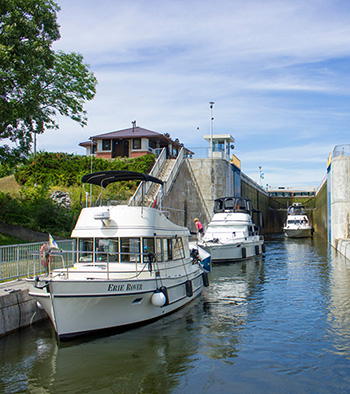
Overview
In order to facilitate meaningful opportunities for the public to contribute to the management plan review for the Trent-Severn Waterway and Peterborough Lift Lock, a two-phased approach was developed to promote participation from Indigenous peoples, partners, stakeholders and the Canadian public, locally and nationally, using in-person and online approaches to obtain public input.
The phase one engagement activities are briefly summarized in this section, but not discussed in detail in the remainder of the plan.
Phase one engagement activities
Phase one engagement in 2019 focused on exploring the opportunities and challenges related to management of the sites, prior to the development of a draft management plan.
Engagement activities commenced in March to share and discuss the findings of the State of the Site Assessment (2019) with the Williams Treaties First Nations. This report assessed the condition of indictors for national historic sites pertaining to cultural resources, built assets, visitor experience, external relations and Indigenous relations and highlighted the key issues facing the Trent-Severn Waterway. Given the complexity of the site, other indicators reflecting the roles and responsibilities for the Trent-Severn Waterway, including species at risk, business development, realty and permitting and operation, were also explored.
This engagement progressed over the spring and summer of 2019, with a series of five stakeholder engagement workshops and one workshop with the Williams Treaties First Nations, held in communities situated along the length of the waterway. As the reservoir lakes form a significant component of the operation of the waterway, one stakeholder engagement workshop was held in the town of Haliburton. Over 35 representatives from a wide range of sectors and communities attended, including provincial and municipal government, non-government organizations and not-for profit groups, boating industry, heritage and culture, natural environment and tourism. These interactive workshops provided an overview of the management plan review process, discussed the key issues and opportunities for the site and the broader watershed, and brainstormed what the Trent-Severn Waterway could be in 10 to 20 years.

Phase two consultation activities
To protect the health of all Canadians during the COVID-19 pandemic, a strictly online consultation process was held from April 4 to June 30, 2022.
Virtual stakeholder session
One virtual stakeholder consultation session was held with the Coalition for Equitable Water Flow. This session provided an opportunity to discuss the content of the draft plan, and recommendations revisions for the draft management plan focused on delivering an integrated water management system across the broader watershed.
Virtual public consultation sessions
Four virtual public consultation sessions were held during May – June 2022 to elicit feedback on the draft plan. These sessions commenced with a presentation about the management plan review process and a summary of the content of the draft plan. This was followed by an interactive discussion about the importance of the Trent-Severn Waterway, its broader watershed, and the Peterborough Lift Lock to individual participants, the content of the draft plan, and Parks Canada’s roles and responsibilities for the Trent-Severn Waterway.
Indigenous consultation sessions
One meeting each was held with the Williams Treaties First Nations and Curve Lake First Nation to present the management plan review process and discuss the content of the draft plan.
Direct email and social media awareness
Phase two consultation activities were supported by letters to stakeholders and Indigenous peoples and communications on social media channels. People were encouraged to provide feedback via email. Sixteen (16) individuals and organizations provided written feedback via direct email either through the Trent-Severn Waterway common account trentsevern@pc.gc.ca or directly to staff.
Online consultation
An online engagement platform on Parks Canada’s website was developed to facilitate the collection of feedback via an online comment card, direct emails, and social media.
Comment Card
A comment card was available for completion on the website. The Rate Our Plan comment card provided participants an opportunity to evaluate the content of the draft management plan through multiple choice, ranking and open ended questions.
Who we heard from
The many thoughtful responses received during the consultation process is a reflection of the strong connection that Canadians, in particular local residents, feel for the Trent-Severn Waterway and Peterborough Lift Lock.
Comments for phase two public consultation were collected from April – June 2022, via Parks Canada’s website, email and during the public and stakeholder consultation sessions. In total:
| Visits to pc.gc.ca/trent consultation webpages | 1,200 |
| Rate Our Plan comment card respondents | 71 |
| Virtual stakeholder consultation session participants | 10 |
| Virtual public consultation session participants | 25+ |
| Written submissions | 16 |
| Canada | 85.5% |
| Ontario | 80.7% |
| Quebec | 3.2% |
| Other province or territory | 1.6% |
| United States | 12.9% |
| International | 1.6% |
The majority of participants (97%) reported they had visited the Trent-Severn Waterway before; 79% had travelled by motorized boat through a lock; and 85% had visited the Peterborough Lift Lock. People ages 25 years old and up participated in the online comment card, with 68% of participants over the age of 55.
What we heard
The feedback provided to Parks Canada is organized under six (6) main headings, reflecting the six (6) key themes that arose during the phase two consultation process. Many of these topics are inter-related and could fall under multiple headings. However, we have reported on each theme under only one topic heading. Comments and feedback received through all sources in the public consultation process were carefully considered, analyzed and summarized, as presented in the topic summaries below.
Water management
A key topic of discussion in the public consultation sessions and the written submissions was water management across the watershed. Many respondents communicated concern in how water management decisions can affect a local waterbody, through raising and lowering water levels, with a focus on both the impact of decisions on residents, cottagers and boaters of the system across the watershed, and how water management can have an impact on the freshwater ecosystem, including water quality, fish and fish habitat, wetlands and the health of shorelines.
Key strategy 3’s objective that water management decisions are made using a system-wide approach based on high, quality, systematic, regularized data collection received significant support, with 71% of respondents indicating that this objective was ‘very important’. Participants expressed support for continued water management approach at the integrated watershed level and the modernization of the water monitoring network through the ongoing exploration and development of new tools and methodologies, and review integration into decision-making on an annual basis.
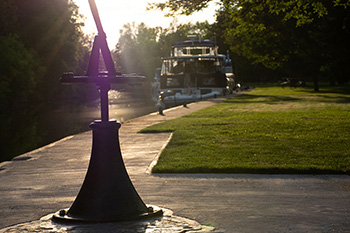
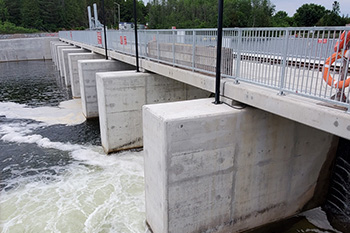
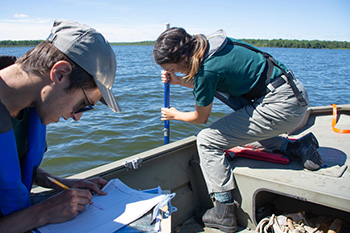
Natural environment conservation
A common theme across all consultation media was minimizing or avoiding impacts to the natural environment of the waterway in all operational activities.
96% of respondents to the online comment card felt it was ‘important’ or ‘very important’ that the terrestrial and freshwater ecosystem of the Trent-Severn Waterway is better understood, conserved and protected, with a focus on protecting species and risk, managing invasive species, and aquatic vegetation management in the navigation channel.
Respondents also communicated concern about the potential impacts of climate change on the waterway and the importance of understanding how climate change may impact operations, asset management, environmental management and water management.
While there was support across all consultation media for new services, amenities, facilities to support tourism and economic development within the region, it was emphasized that new initiatives should be low impact, in design and implementation.
Lastly, participants encouraged further exploration of environmentally-friendly water power facilities on the waterway, the integration of sustainable development principles into Parks Canada’s operations, and the reduction of boater dependency on generators at lockstations.
Visitor experience
Respondents communicated support for objectives and targets within the plan that allowed for greater opportunities to experience the canal through hiking, paddling, camping and cycling, and an interest in building upon the traditional motor boating experience to welcome more self-propelled boaters to the waterway.
In particular, the number one priority for supporting greater opportunities to explore the region by paddling, camping, cycling and hiking was the development of a suite of trip planning tools and amenities/facilities in partnership with others.
In the public consultation sessions and written submissions, participants expressed an interest in greater opportunities for experiences and activities at lockstations, and enhanced interpretation and public education about the engineering marvels across the Waterway, such as the Big Chute marine railway.
Many respondents, particularly those who completed the online comment card, expressed concern that the plan did not sufficiently acknowledge and support the interests of the established motor boating public, and the management strategies were shifting the focus away from traditional boating, rather than the real goal of broadening the target market through additional visitor experiences and services. Respondents expressed an interest in additional services, amenities and facilities which served not only paddlers, hikers, campers and cyclists, but recreational boaters as well, along with more shore power and docking at lockstations.
Quote:
“In these times of never ending movement and stress, this canal is a great example of how to slow down and relax, to chat with strangers, stop for a good meal at a family owned restaurant or to enjoy an ice cream.”

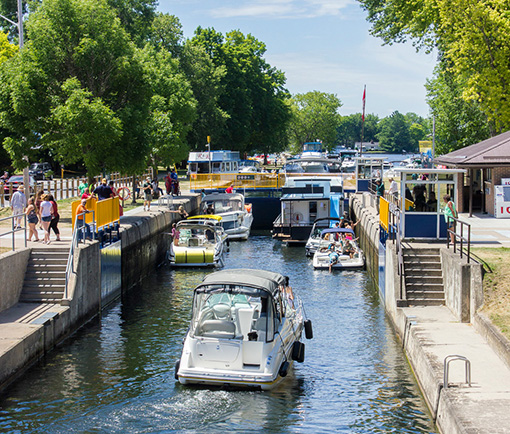
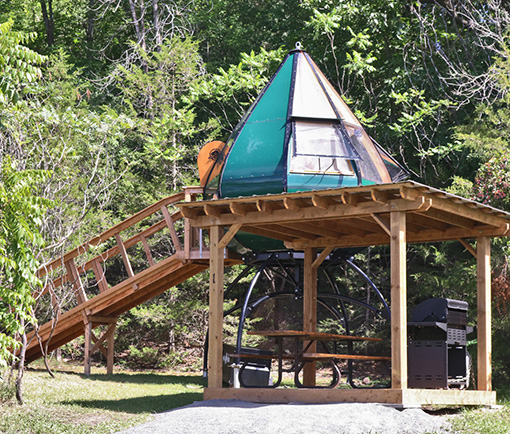

Public and stakeholder engagement
Across all consultation media, participants supported and encouraged objectives focused on collaboration and cooperation, on all subject matters, with an emphasis on regular engagement with local communities and stakeholders. Interest was also communicated on strengthening communication to the general public who may not be actively engaged in special interest groups or organizations. Specifically, 90% of respondents to the online comment card felt it was ‘important’ or ‘very important’ that Parks Canada’s management of the Trent-Severn Waterway is supported and strengthened by collaborative relationships with others.
Regulations, legislation and their enforcement
Many respondents expressed support for modernizing Parks Canada’s legislation, regulations and policies. People felt more action should be undertaken to enforce the Historic Canals Regulations and the Policies for In-water and Shoreline Works and Related Activities and to modernize these regulations and policies to more effectively manage the broad range of functions, activities and usage of the waterway occurring today.
Participants spoke to the importance of safe use of the waterway by all, noting concerns about the negative impacts of boat speeds on other users, private property and the environment, and a lack of adherence to speed limits. It was recommended that increased patrols, signage and education be implemented to support safe use of the waterway.

Peterborough Lift Lock
Participants who provided feedback on the management area approach for the Peterborough Lift Lock supported the proposed vision for the long term management of the site. In particular, respondents to the online comment card felt that the priority for the Peterborough Lift Lock was not just to maintain it in fair to good condition through regular monitoring, maintenance and renewal, but to commit to ongoing capital investments to ensure the Lift Lock is rehabilitated and maintained to good condition.
This is consistent with feedback on the conservation of the Trent-Severn Waterway’s contemporary assets and cultural resources. 91% of respondents to the online comment card felt it was ‘important’ or ‘very important’ that the Waterway’s engineering marvels are conserved, with a focus on developing long term asset management plans that conserve the cultural significance of the Trent-Severn Waterway, identify actions to make the asset portfolio sustainable, and address climate change risks to assets, services and operations.
Respondents highlighted the desire for and importance of interactive and family-oriented experiences; ‘back-stage’ tours to experience the operation of the Lift Lock; greater interpretation and public education about the site and waterway as a whole; as well as exploring opportunities within the broader setting of the Peterborough Lift Lock in collaboration with others.
Next steps
Final questions in the online comment card asked participants their level of satisfaction with the contents of the draft management plan. 62% of respondents indicated they were satisfied with the plan, while 15% said they were impressed with the draft plan. 23% indicated their dissatisfaction with the contents of the draft plan and 63% of respondents felt that some parts of the plan were still unclear. 37% of respondents reported that they are “very likely’ to participate in further conversations about management planning on the Trent-Severn Waterway.
The feedback received during the consultation process is helping to inform revisions to the draft Trent Severn Waterway National Historic Site (including Peterborough Lift Lock National Historic Site) Management Plan in areas related to water management, the natural environment, policy and legislation, and visitor experience.
Once complete, the final plan will be approved by the PCEO of Parks Canada and tabled by the Minister of the Environment and Climate Change in Winter 2022. All participants in the consultation process will receive direct notification of the public release of the management plan, supported by communications on the Parks Canada website and via social media channels.
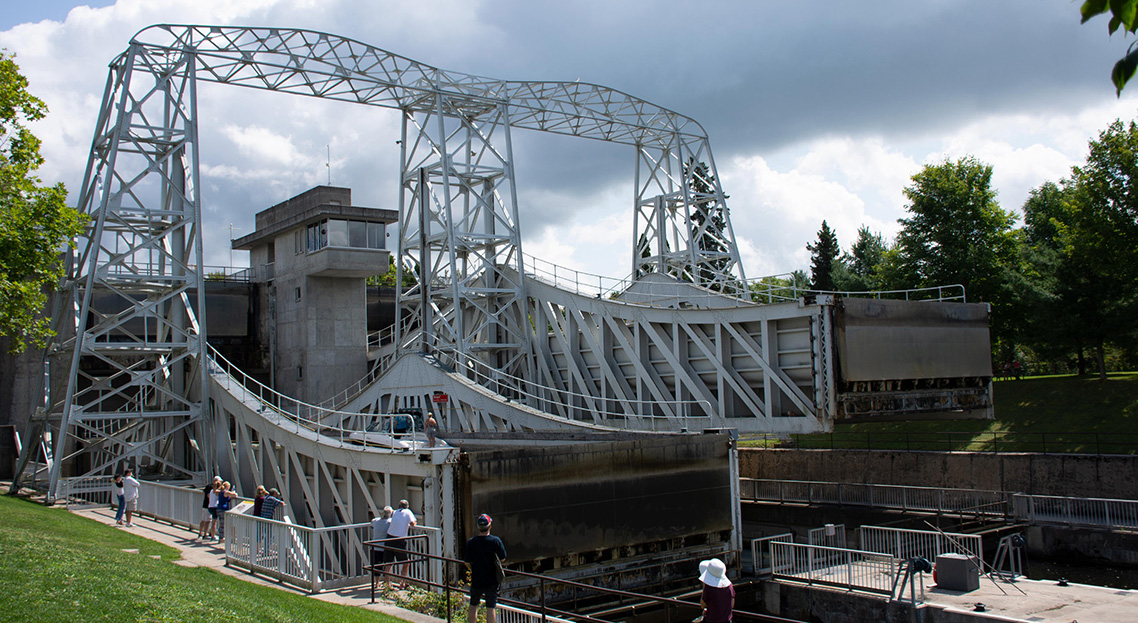
More information
Related links
- Date modified :